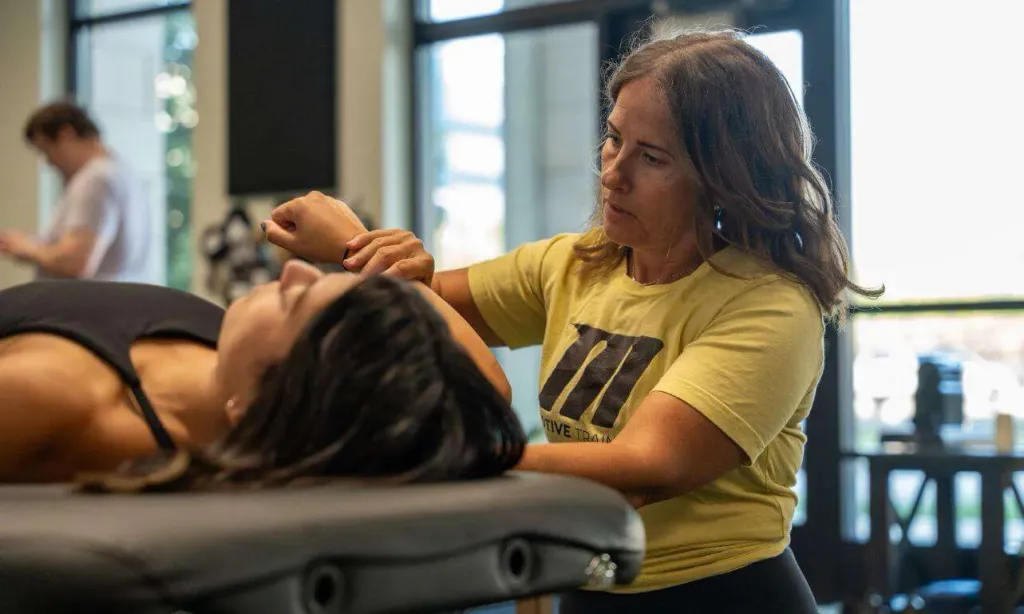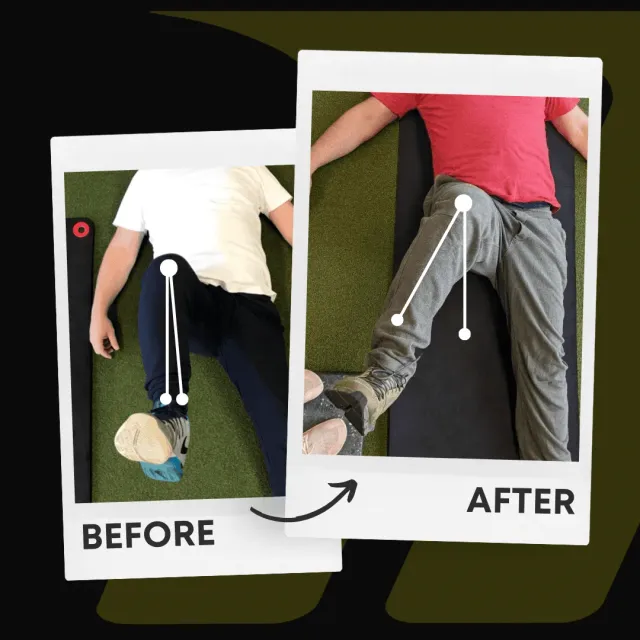Top 7 Reasons To Train FRC For Hiking And Trail Running
November 6, 2023 | Functional Range Conditioning

Fall is in full-color tour mode here in Michigan. The Fall season is sublime across the Midwest for hiking and trail running. Temperatures are palatable and crisp, the scenery is majestic, and paths are groomed for exploration. If you are a regular on the trails or enjoy hitting them on a whim, Functional Range Conditioning is guaranteed to support you in your efforts to have a good experience out and about.
What is FRC? Great question! FRC is a system of training that focuses on improving your joint’s range of motion, strength, and resilience. This is important for fall hiking and trail running because these environments are prime for sudden changes in terrain. So, you’ll want to be prepared for the unexpected, and FRC will help you with that. But don’t take my word for it; let’s dig into this a bit deeper.
Improve range of movement.
The industry term is range of motion or ROM, but I like to think of it as your range of movement! There are many benefits to improving range of motion for physical health and fitness. FRC exercises can help you increase your range of motion in all your joints, including your hips, knees, ankles, shoulders, and spine.
At its core, FRC employs a multitude of stretching modalities. But to make this simple, we’ll say that FRC uses both static (isometric) stretching and dynamic stretching to improve your joint’s range of motion. Here are examples of how we may move or stretch your joints.
These are side-lying hip CARs (controlled articular rotations) to improve hip mobility!
This is a deep hamstring stretch protocol we use to open up the back of the legs.
At Motive Training, all of us are certified in FRC. Thus, we can use this system to guide you through your available ROM with a custom strength training practice. This depth of training can help you to move more freely and easily when you are hiking or trail running. Additionally, being more mobile will directly tie into your balance and stability. Do you want to be more surefooted on the trail? I know I do!
Increase strength.
Hiking uphill requires strength in your legs, core, and upper body, and walking downhill requires all-around strength and balance. Along with navigating the terrain and potential elements, you might have to wear a backpack or carry gear. So, increasing your strength is one of the best things you can do to improve your hiking experience.
Even though FRC is often regarded as a stretching practice, it can help to facilitate stronger joints. For example, if we can get your hips to rotate better, we will likely see better strength outcomes in areas where rotation is needed. Do you know where rotation is required? In every movement your hip tries to do!
The question is, is your body prepared to handle how it will be challenged on a hike or trail run?
Improve performance.
Improved physical performance can make hiking more accessible and more enjoyable. Stronger muscles and tendons can help to protect your joints from injury, but leveling up your endurance will allow you to hike longer without getting tired. Conversely, increased power will allow you to climb hills and cross obstacles more easily when you need to be more explosive or agile.
FRC programming will cover the gamut, helping you to improve your performance. We have strategies to increase your joint’s endurance potential like we have exercises to improve your joint’s power potential. This type of training will help you to hike and run faster and more efficiently. How are you preparing your body for the next level on the path?
Reduce muscle soreness and fatigue.
Recovery is the essence of progress, and one of the main benefits of FRC training is that it can help improve your body’s ability to recover from exercise. This is because FRC training helps to improve your circulation and reduce inflammation. When your circulation is improved, your muscles can receive more oxygen and nutrients, which allows them to recover faster and more efficiently. FRC training also helps to reduce inflammation, which can also help to reduce muscle soreness and fatigue.
Another benefit of FRC training is that it can help to improve your body’s efficiency. When your body is more efficient, it can use less energy to perform the same task. This can help to reduce muscle fatigue and extend your endurance.
Ultimately, FRC will help you improve the communication between your brain and your muscles, which can help to reduce muscle tension and improve muscle efficiency. As a result, you can hike longer distances with less effort and less soreness.
Reduce the risk of injury.
FUN FACT: FRC also helps to improve your neuromuscular control; this is the ability of your nervous system to control your muscles. Improved neuromuscular control can help reduce your risk of injury by allowing your muscles to react more quickly and efficiently to changes in your environment. Further, FRC exercises help to strengthen your muscles and joints from the inside out, which also supports a reduction in your risk of injury. By improving the function of the neuromuscular system, range of motion, and joint stability, FRC can help you to stay safe on the trail.
Improve mental toughness.
Strength training has been shown to help increase your self-confidence and self-esteem. When you feel strong and capable, you are more likely to believe in yourself and your ability to overcome challenges. Training with intent will help to improve your ability to focus and concentrate. This is because strength training requires you to focus on your form and technique to avoid injury. When you can focus and concentrate during your workouts, you are more likely to be able to focus and concentrate on other areas of your life, such as hiking.
FRC exercises help you go deeper to improve your mental toughness by challenging you to push yourself outside of your comfort zone. Mobility training is personal, and training with this method is a very intimate way to strength-train your body. Mental toughness for hiking and trail running helps you stay positive and motivated in the face of obstacles along the way.
Have more fun!
If you are mindful of your surroundings and present to appreciate the beauty of nature, you are more likely to have a more enriching experience on the trail. For example, taking the time to notice the wildflowers, listening to the sounds of mother nature, and deep breathing the fresh air can help you connect more with the outdoors and have a more meaningful hiking experience.
FRC training helps support you in having more fun by making you feel more confident and capable while improving your overall fitness and strength. When you know that you are stronger and stable, you can relax and enjoy the scenery and the whole experience more. Think about how you might further enhance your experience by hiking with family and friends, bringing water and snacks, and always enjoying the views.
Use Functional Range Conditioning for hiking and trail running
If you want to improve your fall hiking and trail running performance and experience, I encourage you to consider training with FRC. FRC is a safe and effective training system that can help you move better, feel better, and perform better.
Here are some tips for getting started with FRC:
- Find a qualified FRC instructor who can teach you the basics of FRC and help you create a personalized training program. Motive Training is here if you need us (reach out using the links below).
- Begin with essential FRC exercises and gradually progress to more challenging exercises as you get stronger and more flexible.
- Be patient and consistent with your FRC training. It takes time to see and feel the benefits. It is essential to start slowly and gradually increase the intensity and duration of your workouts. It is also important to listen to your body and take breaks when needed.
- Aim to train 2-4 times per week.
Use FRC for hiking and trail running to improve performance and reduce your risk of injury while improving your recovery time. If you are serious about these activities or do them for fun, I encourage you to give us a call and come on in a free consultation to learn how your body can best enjoy the great outdoors this time of year!
Written by

Motive Training Staff
We’ll teach you how to move with purpose so you can lead a healthy, strong, and pain-free life. Our headquarters are in Austin, TX, but you can work with us online by signing up for KINSTRETCH Online or digging deep into one of our Motive Mobility Blueprints.




